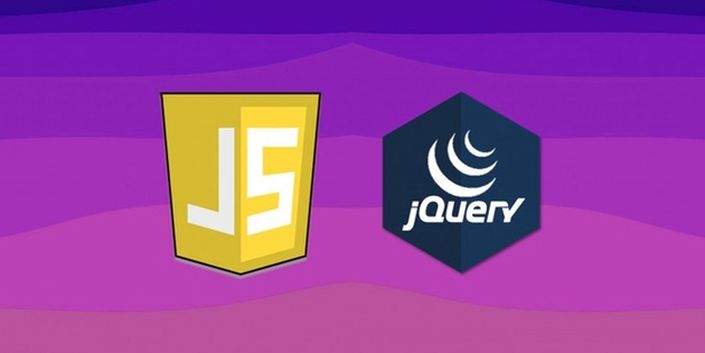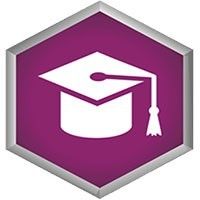
Overview
JavaScript is a programming language that can be run by all modern web browsers. It is downloaded alongside the HTML code of a webpage. Unlike HTML, which can only be used to display content, JavaScript allows web designers to add functionality and interactivity to their websites.
JQuery is a popular JavaScript library that is used extensively in modern websites. This library facilitates common JavaScript tasks such as animations, event handling, manipulating HTML content, and communication with external servers. In addition to its easy-to-use features, JQuery also takes care of many cross-browser compatibility issues automatically.
What you will learn
Javascrtipt Modules...
We will begin the course by learning where to write JavaScript. We will look at writing JavaScript directly inside an HTML tag, then inside of a <script> tag, and then finally in a file separate from the HTML document. We will discuss some of the reasons for using each method.
After that, we will learn about how to manipulate some basic data types. We will learn about how to do simple arithmetic, and also look at some of JavaScript's built-in mathematical capabilities. Then, we will learn about working with words and characters, using a data type known as the "string". We will also cover the Boolean type, which is a representation of True and False inside of a programming language.
Then we will move on to more complex types. We will learn about the array, which is essentially a list. We will look at how to create arrays, how to access elements inside them, and how to modify the contents of an array. Functions will also be covered, which will allow us to organize code into simple, reusable pieces. We will also learn about objects, which are a way of grouping together data and behaviors.
We will then move on to control flow. We will look at the "if" statement, which allows the script to decide whether or not to execute a block of code based on some condition. We will also look at looping. Looping refers to repeatedly executing a block of code until some condition is met. Then, we will learn about errors, and how to handle them properly so that they do not halt execution of the script.
Next, we will look at the Document Object Model ( DOM ). This is what allows JavaScript to interact with the HTML code of a webpage. We will look at several ways of finding any particular HTML element on the page. Then we will see what information we can extract from that element (tag name, attributes,etc.). We will learn about adding and removing elements from a page. Finally, we will learn about events, which allows JavaScript to react to things like mouse clicks, mouse movement, key presses, and many others.
We will end the course with a practical exercise, in which we will build a simple JavaScript-based webpage. We will put to use most of the concepts covered in the course. We will look at how to validate user input, how to display results, and how to display meaningful error message to the user.
jQuery Modules...
We will begin the course by learning about selectors. Selectors are strings that are used to target specific HTML elements on the page. The selector syntax is highly intuitive and easy to read and understand.
We will then move on to events. The student will learn how to write code that reacts to things like mouse clicks, key presses, when the page is done loading, and a few others. These events allow programmers to create interactive user interfaces.
After that, we will move on to effects and animations. Effects are used to hide and show elements. An example would be a menu that slides open when the mouse hovers over it. JQuery has a few built-in effects that can be implemented with minimal coding. For further customization, we will look at animations, which allow programmers to animate most of the visual properties of HTML elements.
Then we will learn about changing the HTML content of a webpage. This includes adding and removing entire HTML elements, as well as modifying text and other HTML attributes programmatically. We will also learn about how to navigate the tree-like structure of an HTML document using the concept of parent-, sibling-, and child-elements.
Finally, we will end the course by looking at AJAX, which stands for Asynchronous JavaScript and XML. AJAX allows programmers to interact with external servers. To serve as our example, we will read airport data from a public web service. We will learn how to request data, how to handle the response, and how to handle errors.
Prerequisites
HTML: The student must know how to use HTML tags and attributes. Only a very basic understanding of HTML is assumed.
Google Chrome (Recommended): Google Chrome is a free web browser and it will be
used to execute all the examples in this course. Although all browsers can run JavaScript, Chrome has extensive built-in developer tools. In the course, we will be using Chrome's JavaScript console, which will allow us to run quick little examples without the need to create and edit files.
Notepad++ (Recommended): Notepad++ is a free, open-source text editor. Although JavaScript and HTML can be written using any text editor, Notepad++ is highly recommended because of features such as syntax highlighting and auto-complete.

EDUmobile Academy develops high quality video training courses around topics in mobile development including iPhone, Android, Windows Phone, Java, Responsive Web Design and other emerging technologies.
Every course is created by an expert developer AND a trained mentor in the area of expertise.
Each course undergoes a rigorous planning, review and an internal quality check phase - to ensure that the teaching is of highest standards available online.
EDUmobile Academy was founded in 2008 when smart phones were just emerging into the market. Founder Vishal Lamba is experienced in multiple areas of digital design, mobile development and design, web technologies and digital marketing. He has a mathematics and computer science degree from Lawrence University, USA.
Vishal works closely with content creators and teachers to ensure that every course released meets the internal rigorous quality standards.
All course creators and trainers are currently based in the USA. Support for each course on Udemy is provided with quick turn around by a small team of developers and trainers.